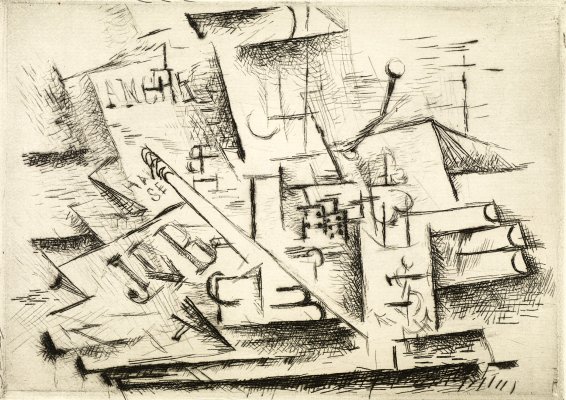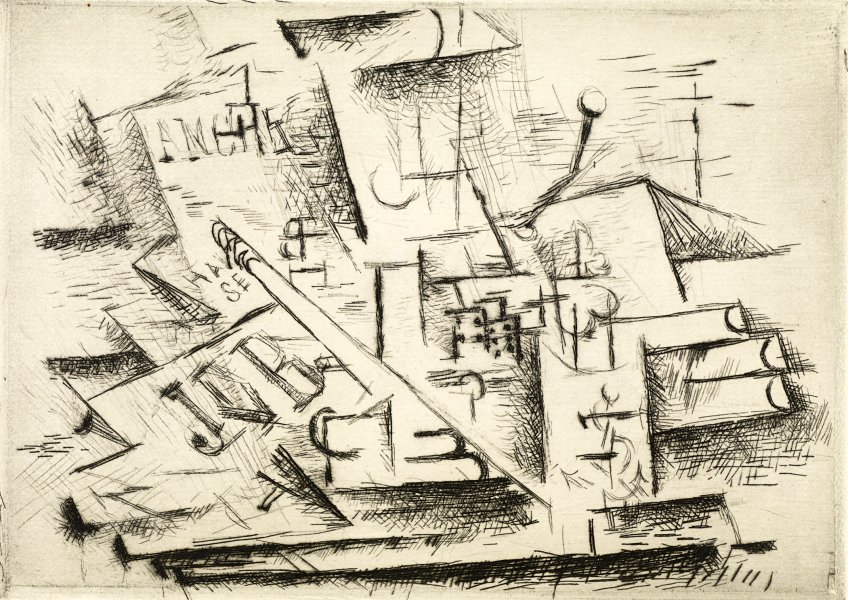About the Artist
Georges Braque was born in France in 1882. Trained as a house painter and decorator by his father, Braque studied art in the evenings. Beginning his career as an impressionist painter, Braque visited a Fauvist exhibition and, inspired by the artists’ uses of bright color, adopted their style. Braque’s art began to evolve further after he became inspired by the artwork of Paul Cézanne (French, 1839–1906), especially Cézanne’s use of multiple perspectives. In 1909, Braque developed a friendship with fellow artist Pablo Picasso. Through collaboration and working side by side, Braque and Picasso developed Cubism, producing monochromatic complex multiple-perspective paintings. The two continued to work closely together until 1914 when Braque served in the French Army during World War I.
After being wounded in combat in 1916, Braque continued to create art. His artistic style evolved further as he focused on color, texture, and the creation of still lifes. In addition to painting, Braque also created lithographs, engravings, and sculptures.
About the Art
Etching is a printmaking technique. To begin, a metal plate is treated in an acid-resistant wax-like coating. Using a needle tool, the artist draws his design into the coating, exposing the metal plate. Once the drawing is done, the plate is submerged into an acid bath. The acid will eat away at the metal that is exposed, creating engraved lines. Once this process is complete, the excess coating is removed. Then, using a tool called a brayer, the artist will roll ink onto the metal plate. The ink collects in the engraved drawn lines. The artist will wipe away any extra ink on the surface of the plate. To create a print, the artist drapes a paper over the inked plate, applies pressure, and then lifts off the paper, leaving a print of the inked engraved lines on the paper. In art, plates can be used many times to create multiples of the same print.
Georges Braque’s etching Job, 1911, features a mixture of Cubist characteristics, including lines, geometric shapes, and simultaneous perspectives. The figure and surroundings are composed of straight lines with various thicknesses. Shapes are lightly shaded with crosshatch marks. A two-dimensional print created with multiple perspectives gives an illusion of three dimensions. The viewer can piece together the different elements of the print to visualize the identifying features of a person, pencil in hand, likely at a desk. The word “JOB” is seen as rectangular papers that appear to be scattered and floating around the figure. The scene depicted in the etching appears busy and hectic, filled with fast sketchy lines and sharp angles, which could be intended to represent the hustle and bustle of work life.

